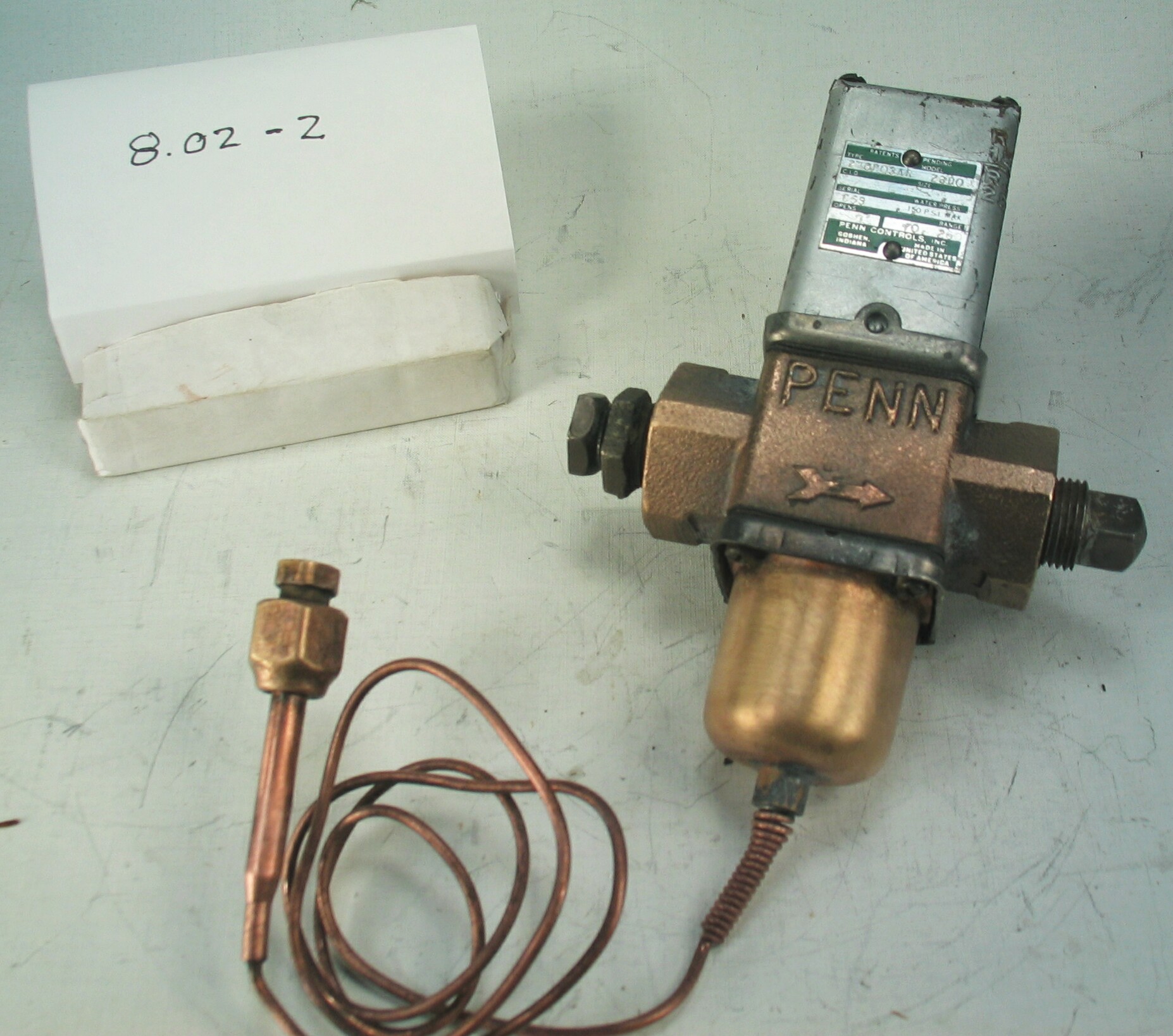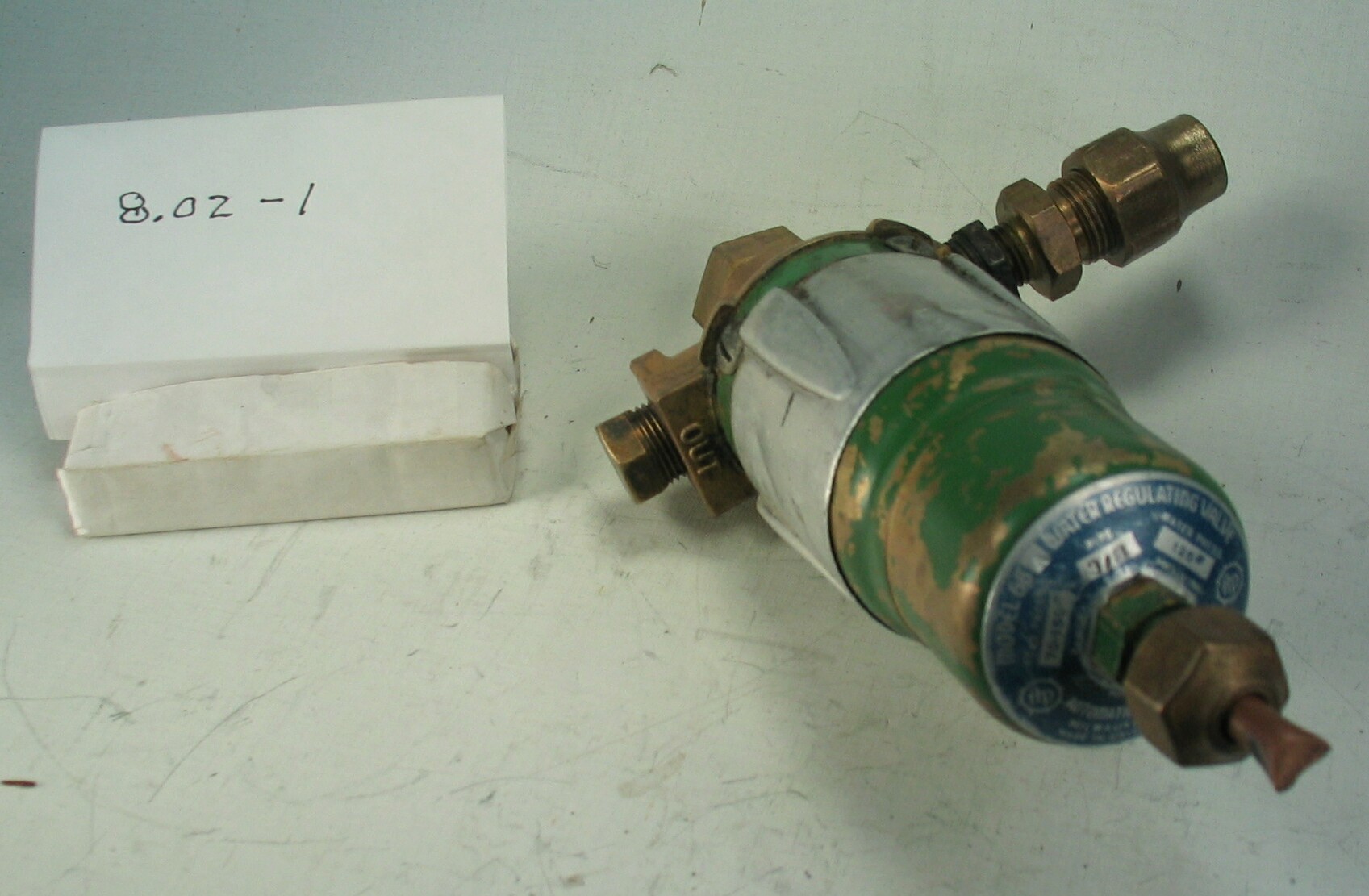8.02-4: Penn Controls 1955 Water Flow Regulating Valve

| HHCC Accession No. 2006.087 | HHCC Classification Code: 8.02-4 |
|---|
Description:
A compact, modulating, water flow, regulating valve for use on water cooled refrigerant condensers, equipped with brass body, external power element and 2 foot capillary line, calibrated for Freon 12 and 22, operates on refrigerant system head pressure to minimize water consumption, adjusting water flow to meet the needs of the system without overrun and wastage, Model 2300, Penn Controls, 1955.
Group:
8.02 Other Refrigerating and Air conditioning Components and Parts - Commercial
Make:
Penn Controls
Manufacturer:
Penn Controls Inc. Goshen, Ind.
Model:
2300, Type 246P03AR
Serial No.:
Size:
4 x1.5 x 6’ h
Weight:
2 lbs.
Circa:
1955
Rating:
Exhibit, education, and research quality, illustrating the design and construction of mid 20th century, compact, adjustable, advanced design, water saving, regulating valves, in a period before water conservation was a matter of wide spread public interest and concern.
Patent Date/Number:
Provenance:
From York County (York Region) Ontario, once a rich agricultural hinterlands, attracting early settlement in the last years of the 18th century. Located on the north slopes of the Oak Ridges Moraine, within 20 miles of Toronto, the County would also attract early ex-urban development, to be come a wealthy market place for the emerging household and consumer technologies of the early and mid 20th century.
This artifact was discovered in the 1950’s in the used stock of T. H. Oliver, Refrigeration and Electric Sales and Service, Aurora, Ontario, an early worker in the field of agricultural, industrial and consumer technology.
Type and Design:
Modulating, water flow, regulating valve, with brass body and external power element and capillary line, operates on refrigerant system head pressure to minimize water consumption, adjusting water flow to meet the needs of the system without overrun and wastage.
Construction:
Material:
Special Features:
Eexternal, replaceable power element and capillary line
Accessories:
Capacities:
Performance Characteristics:
Operation:
Control and Regulation:
Targeted Market Segment:
Consumer Acceptance:
Merchandising:
Market Price:
Technological Significance:
It was the mid 20th century, a period before water conservation was a matter of wide spread public interest and concern. Yet water costs were escalating in many urban centres, where water metering had been introduced ‘ thus making water conservation much more a matter of economics than an essential and mandatory conservation practice.
Industrial Significance:
Many early commercial refrigeration applications in dairies, food stores and confectioneries, were water-cooled systems. More efficient than air cooling the practice prevailed through out much of the 20th century, where the cost of water made it an affordable condensing medium. In larger and multiple installations involving a number of condensing units a water tower would be used allowing the water to be evaporatively cooled and recycled. Air cooling became increasingly popular in the latter part of the 20th century, with water conservation an ever increasing public issue, and with the development of large remote, multiple pass air condensers and head pressure control devices [See item ID # 195]
Socio-economic Significance:
Socio-cultural Significance:
Donor:
G. Leslie Oliver, The T. H. Oliver HVACR Collection



